How to care for asparagus fern – our expert guide to caring for these beautiful houseplants
Discover how to keep your asparagus fern in top condition year-round with our expert guide to their care
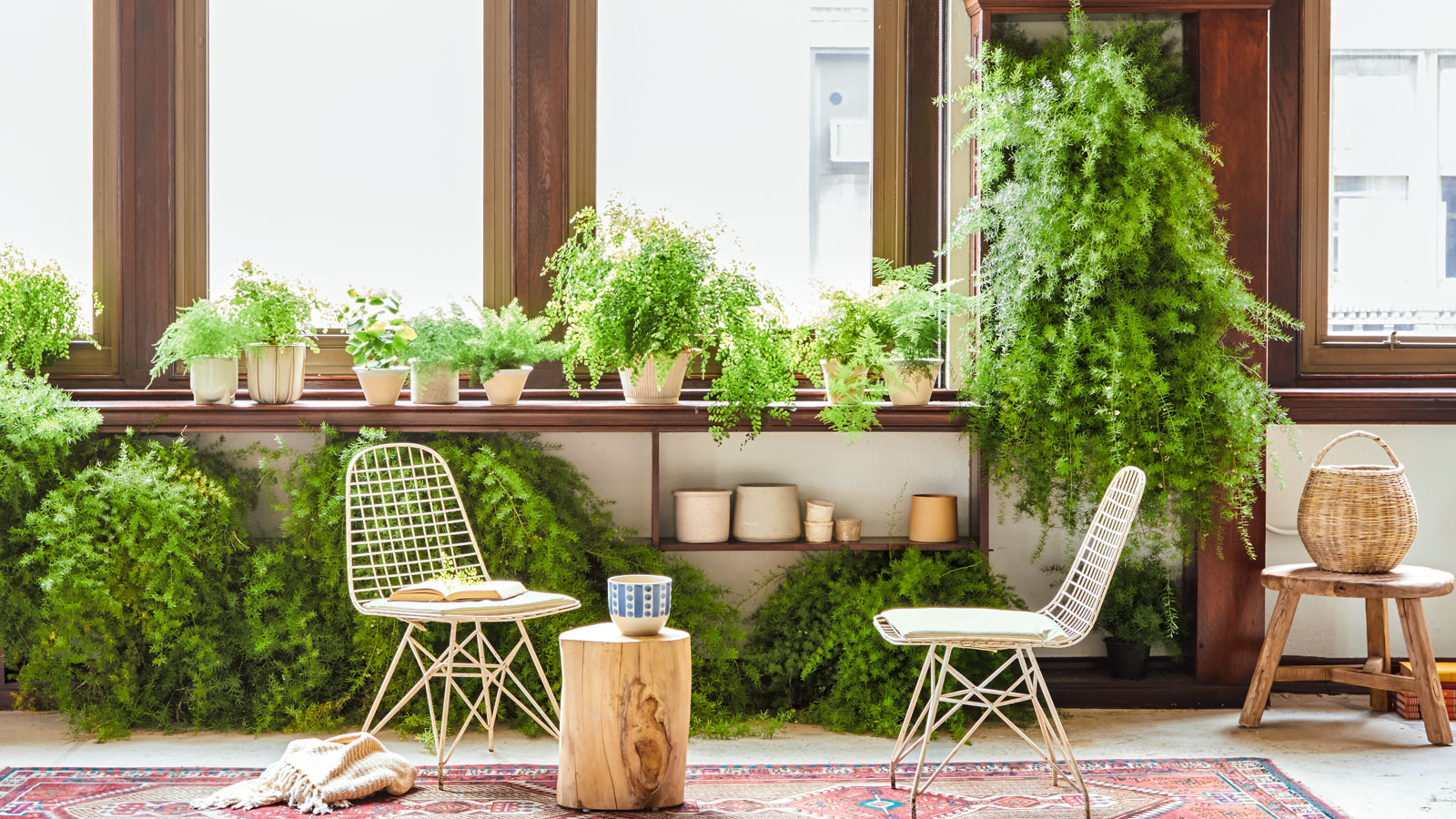

The feathery and attractive green foliage of the asparagus fern make it a popular indoor plant, especially for bathrooms as it enjoys humidity. Despite its finely textured leaves, it's not actually a fern but gets the common name because of its light and wispy fronds that are just like the vegetable garden variety.
'The asparagus fern's common name is somewhat misleading because it's not a fern at all,' explains Melissa Lowrie, manager of plants and gardens for Terrain. 'It gets grouped with true ferns, however, because its airy fronds invite similar design applications. The branches have a fine, needle-like texture and, unlike those of true ferns, grow in plateaus instead of the more typical arches, creating a dense thicket with both vertical and horizontal interest.'
The asparagus fern goes by many names too. Graceful Asparagus setaceus (also known as lace fern or Asparagus plumosus) is the most instantly recognisable houseplant variety with its delicate lacy 'flattened' foliage that gives the shapely outline you're probably familiar with.
Meanwhile Asparagus densiflorus (also known as foxtail fern or plume asparagus) has foliage that is more bushy and plume-like, and makes an equally handsome specimen on your shelves.
Read on for a more detailed lowdown of how to add a lovely focal point to your indoor plant collection with an elegant asparagus fern.

Melissa Lowrie is the divisional merchandise manager of plants and garden for Terrain, the home and garden lifestyle brand from the team behind Anthropologie. She is an industry leader with over 25 years experience in the home and garden space, and has also worked as a photo stylist and floral and event designer. She has been with Terrain since the launch in 2008.
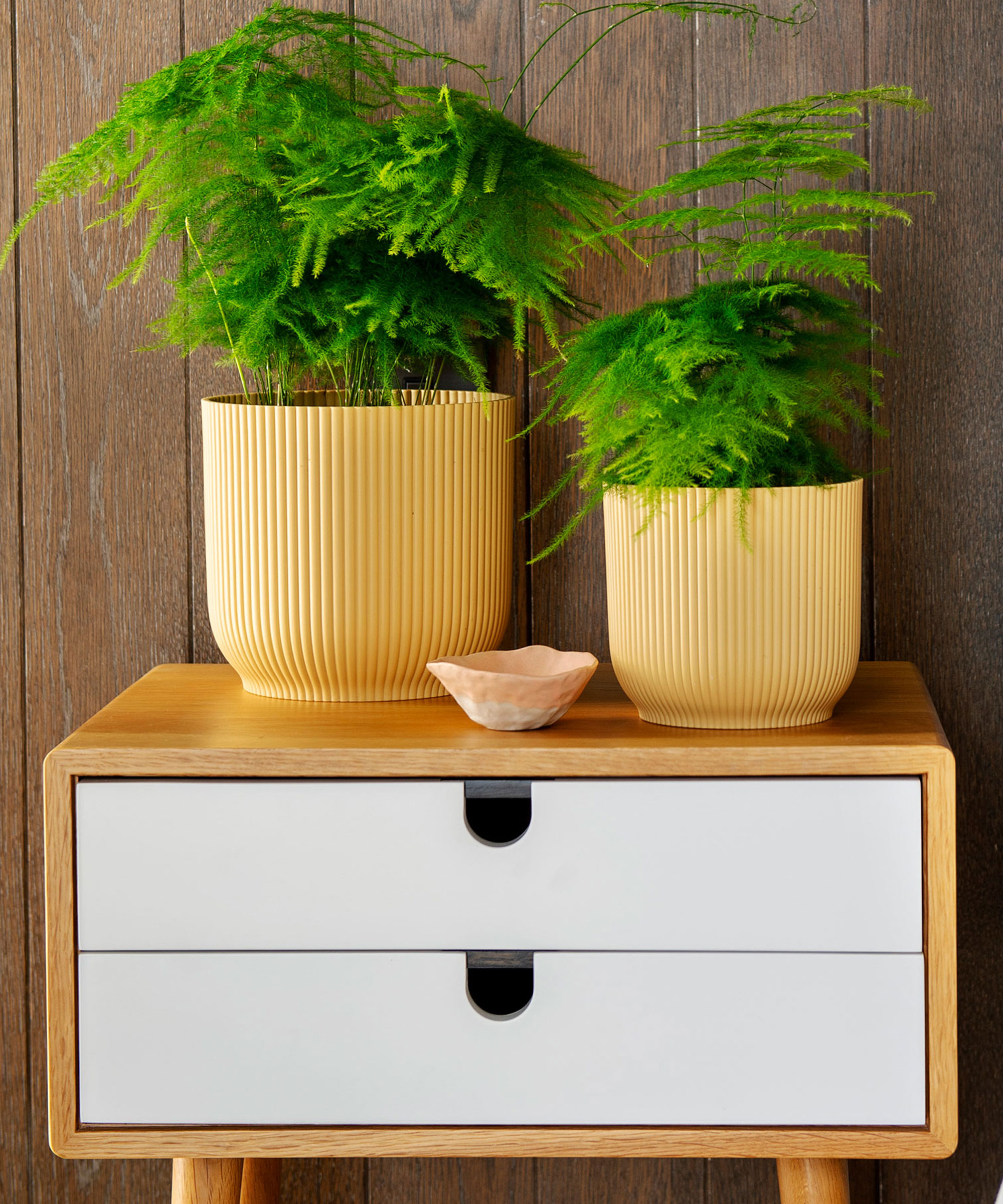
How to care for asparagus fern
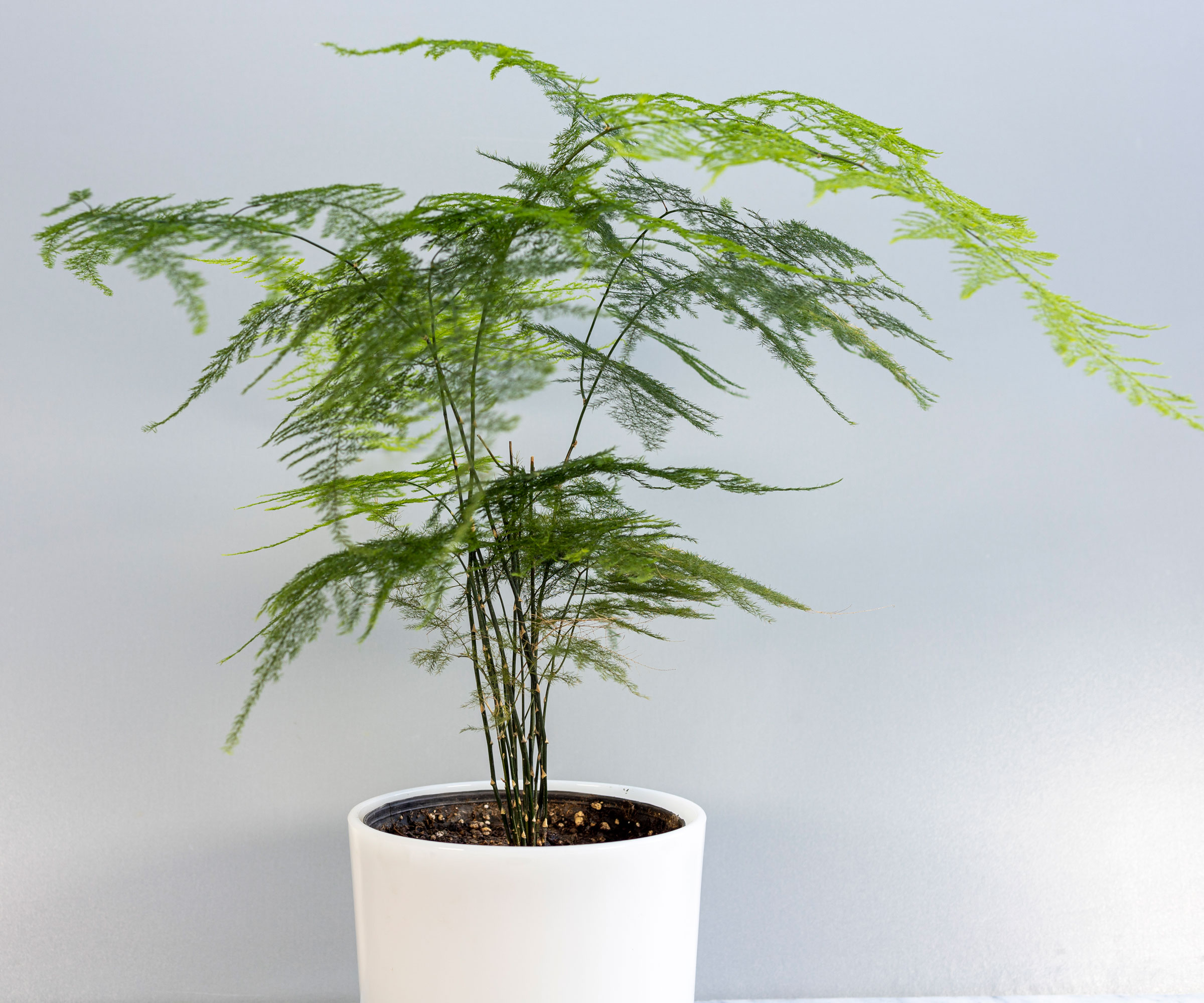
Asparagus plumosus
The key to caring for asparagus fern is to make sure your plant is watered correctly so it stays bushy and dense, as well as keeping it out of direct sunshine in a spot that ideally provides a little humidity. It's one of the best indoor plants for low-light rooms too.
The jury is out on how difficult it is to care for asparagus ferns. Some people find it relatively easy while others admit to struggling, and asparagus ferns do have a reputation for being tricky.
Despite growing up in a home where her mom cultivated lots of big fluffy asparagus ferns, Kamili Bell Hill, creator of Plantblerd, founder of Black People with Plants and author of Happy Plants, Happy You!, available from Amazon, confesses to finding them difficult. 'Some plants are to be loved from afar – way, way afar. The asparagus fern is such a plant for me. I don’t know what type of fern magic my mom has, but I did not inherit it,' she says.
Meanwhile Melissa Lowrie is a huge fan, and gives it plenty of attention in The House Plant Book: An Insider's Guide to Cultivating and Collecting the Most Sought-after Specimens, available from Amazon, where she details how she loves to display lots of them together.
'Asparagus ferns have a unique delicacy that allows them to serve as "punctuation mark" plants, instantly enlivening indoor spaces. Their fine-filigree texture provides a counterpoint to the current trend of home jungles by breaking up collections of broad-leaved tropicals,' she says.

Kamili Bell Hill combines her love of plants and design to curate a brand and community known as PlantBlerd, where she partners beautiful houseplants with simple care information and words of encouragement. PlantBlerd serves as both a style and a growing guide. After noticing a lack of social media platforms highlighting houseplant collectors that look like her, she established BlackPeople.WPlants featuring Black houseplant collectors from around the world. She put a career in law on hold to pursue her true passion of interior design and quickly realized the important role plants play in her clients’ designs.
Where to grow asparagus fern
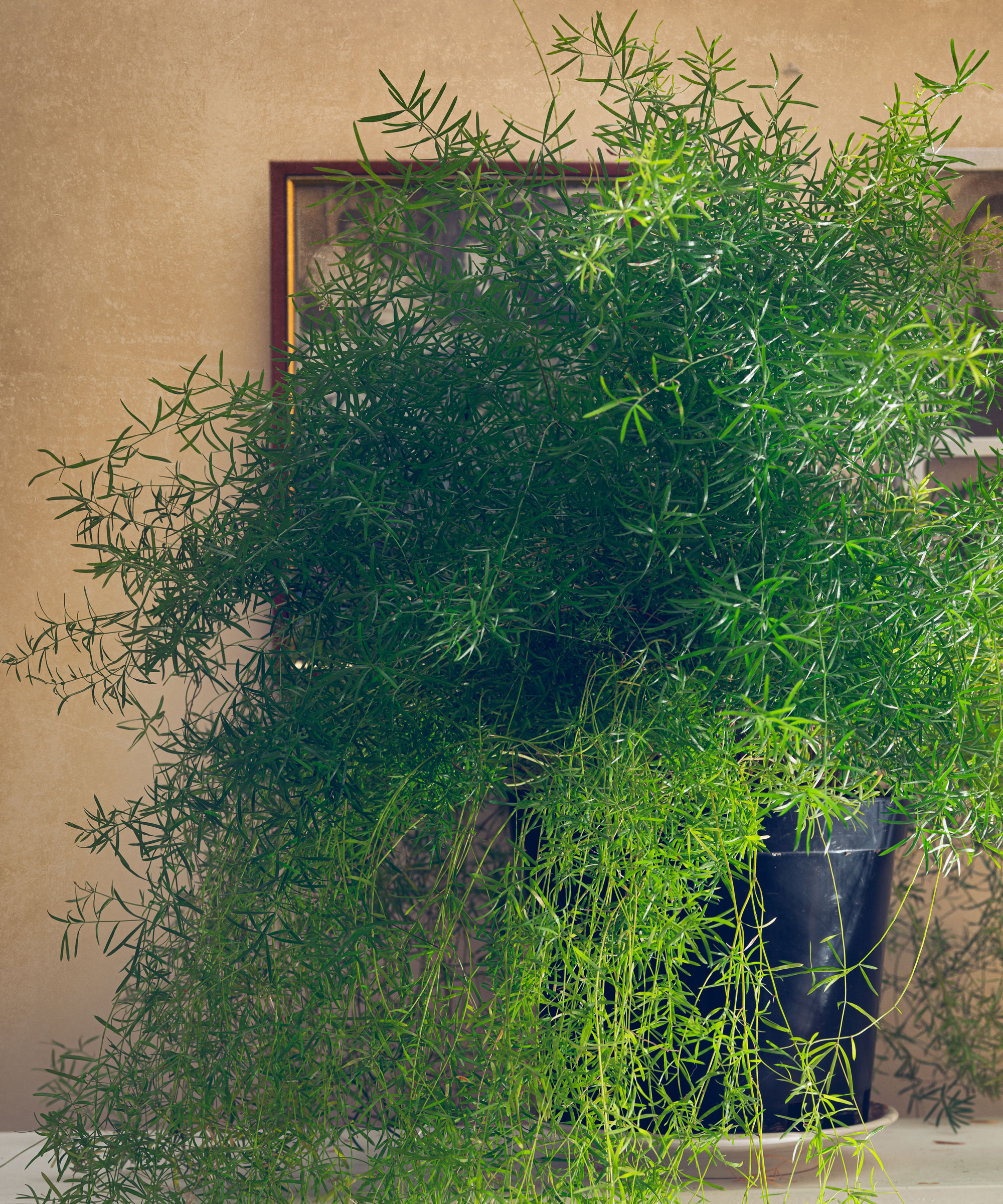
Asparagus densiflorus
A key part of how to care for asparagus fern is finding the right position for them. They like bright indirect light. Don't put your plant in a spot that gets too much sunlight or the foliage can become bleached out. They will thrive in quite low-light positions too.
Keep the plant in a warm room with a temperature range of 60-75°F. Avoid exposing these plants to cold drafts or temperatures below 55°F.
Asparagus ferns thrive in high humidity, and for this reason make it onto our list of the best bathroom plants. Alternatively you can mist the leaves regularly or place a humidifier nearby.
How to water and feed asparagus fern

Asparagus plants prefer to be kept slightly moist and need quite a lot of water especially during the summer months. Water thoroughly every three to four days when the top inch of soil feels dry to the touch. Be careful to drain away any excess so you don't leave your plant sitting in water, which can lead to root rot.
If the leaves of your asparagus turn brown and it looks like it's drying out, it could be that you have under-watered it. Cut off all dried out foliage, and increase your watering routine.
Feed your plant with a balanced liquid fertilizer every two weeks during spring and summer, and once a month during the rest of the year. Be careful not to over-fertilize, as this can cause damage to the plant and cause the leaves to turn yellow.
'Feed sparingly by applying a 10-10-10 liquid fertilizer at half the manufacturer's recommended rate once a month,' says Melissa Lowrie. 'Let your plant rest in winter with no additional fertilizer.'
Asparagus ferns develop strong root systems and can become potbound very quickly. It's a good idea to repot the plant every couple of years into a slightly larger pot each time and use a well-draining nutrient rich potting mix. Asparagus ferns can also be propagated by division during the repotting process.
Problems when growing asparagus fern
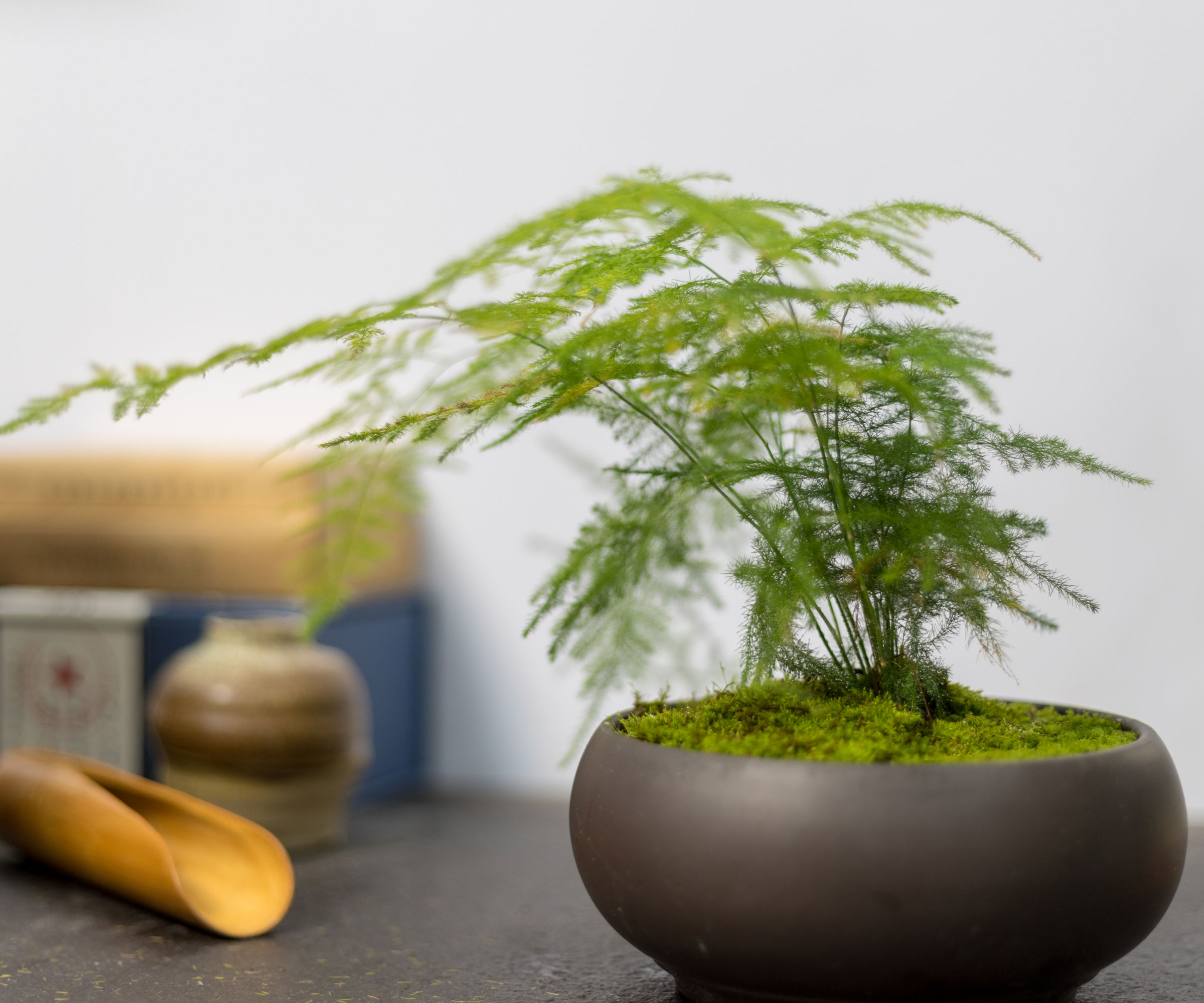
Asparagus ferns have a tendency for their foliage to become discolored and there are several reasons why this happens. You can find out more about why your asparagus fern is turning yellow and how it can be resolved here.
As is the case with so many other ailing houseplants, problems tend to be caused by the wrong location and temperatures that are either too hot or cold, as well as a poor watering technique.
Additionally, the plant can be susceptible to spider mites and mealybugs, so be sure to regularly inspect the leaves and treat any pests promptly as a key part of how to care for asparagus fern.
FAQs
Can asparagus fern be grown outside?
There are many different varieties of asparagus ferns, and some can be grown both indoors and outside. There are some varieties that can stay out all year round if you live in zones 9 to 11.
'As a garden designer and a houseplant lover, I use asparagus ferns in both settings,' says founder of PlantParenthood David Angelov. 'They love a tight pot. I overwinter these ferns in a greenhouse, and use them in front of garages and on balconies where they can put up with a lot of wind and shade.
'All my asparagus ferns live in terracotta pots, irrespective of whether they're grown indoors or out, to help regulate humidity,' he adds
Use asparagus fern outdoors in container gardens to add textured foliage to the mix. It's also one of the best plants for hanging baskets, and looks great hung in front porches or on balconies.

PlantParenthood is a quickly growing garden design, maintenance, and education company providing interior and exterior garden design and installation services. David is a renowned garden designer across the state of Massachusetts.
Asparagus fern offers a great foliage accent to your interior design. Check out more ideas for decorating with plants, as well as the best lime green houseplants if you want to stay ahead of the curve with the latest trends.
Sign up to the Homes & Gardens newsletter
Design expertise in your inbox – from inspiring decorating ideas and beautiful celebrity homes to practical gardening advice and shopping round-ups.
Lifestyle journalist Sarah Wilson writes about flowers, plants, garden design and gardening trends for Homes & Gardens. She has studied introductory garden and landscape design and floristry, and also has an RHS Level 2 qualification in the Principles of Plant Growth and Development. She is a regular contributor to Homes & Gardens and Livingetc. She has also written for Real Homes, Modern Gardens and Country Homes & Interiors magazines.
-
 How to grow crepe myrtle in pots – and transform even the smallest of yards with dazzling flowers this summer
How to grow crepe myrtle in pots – and transform even the smallest of yards with dazzling flowers this summerGrowing crepe myrtles in pots will inject splashes of brilliant color into your outside space
By Thomas Rutter Published
-
 I've spent over 200 hours testing vacuums and swear by my two Dysons – this is how I properly clean a Dyson vacuum filter for longer-lasting appliances
I've spent over 200 hours testing vacuums and swear by my two Dysons – this is how I properly clean a Dyson vacuum filter for longer-lasting appliancesYour Dyson vacuum will last much longer and clean at its best
By Dan Fauzi Published